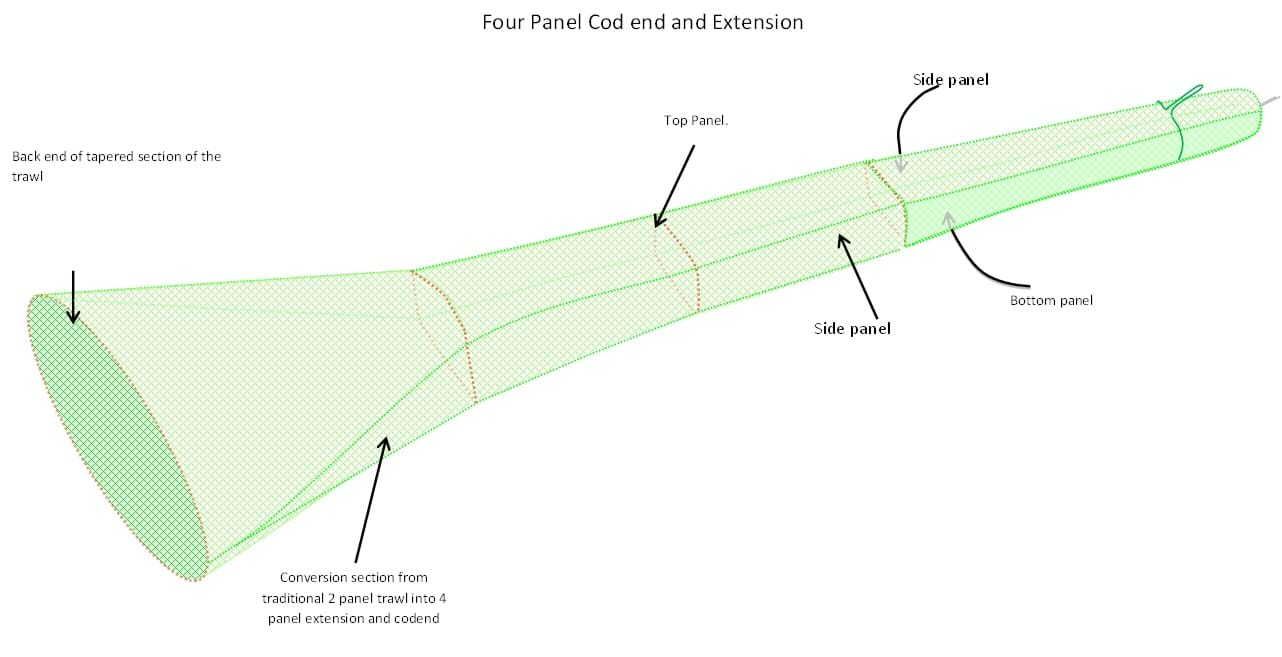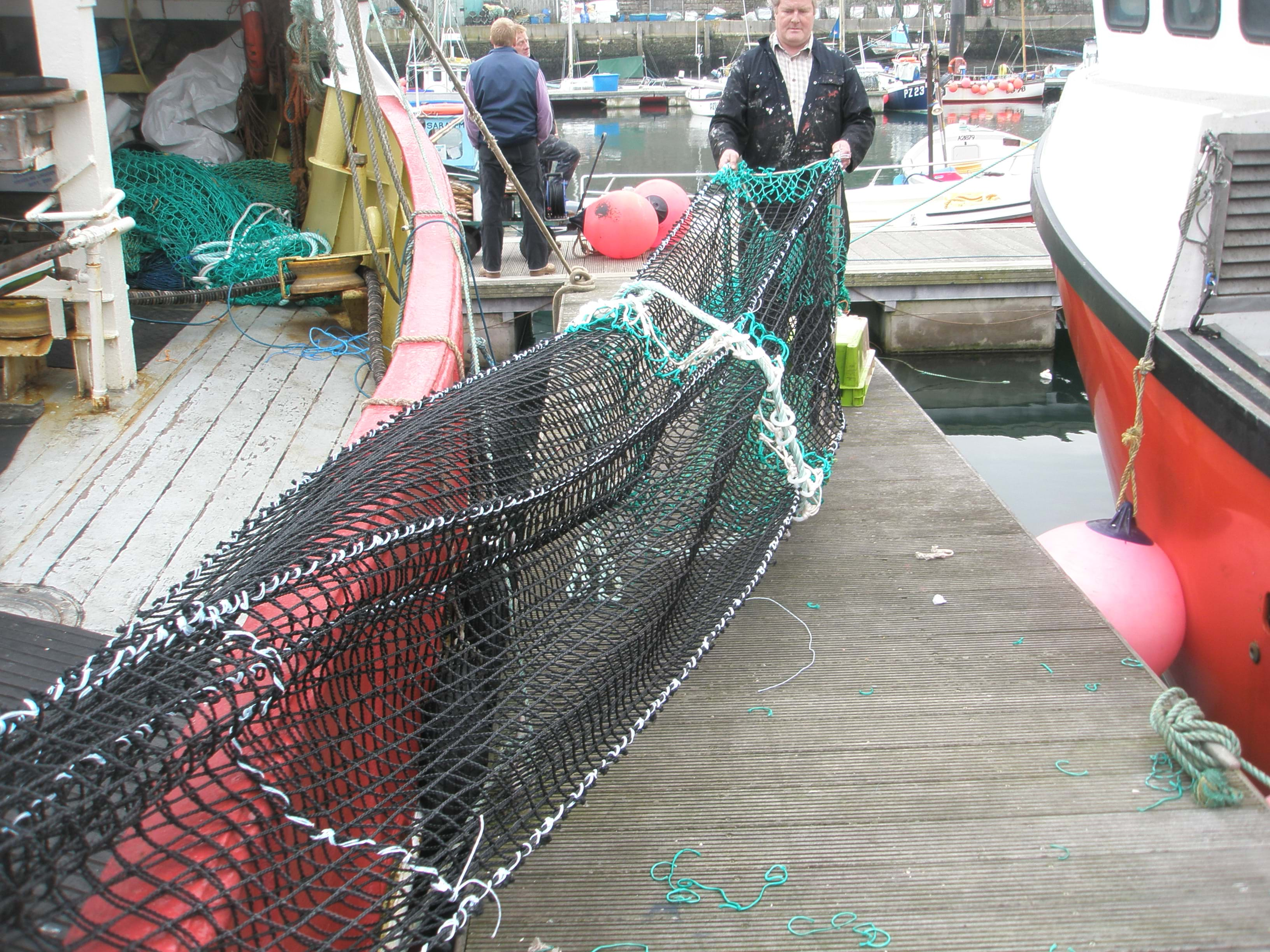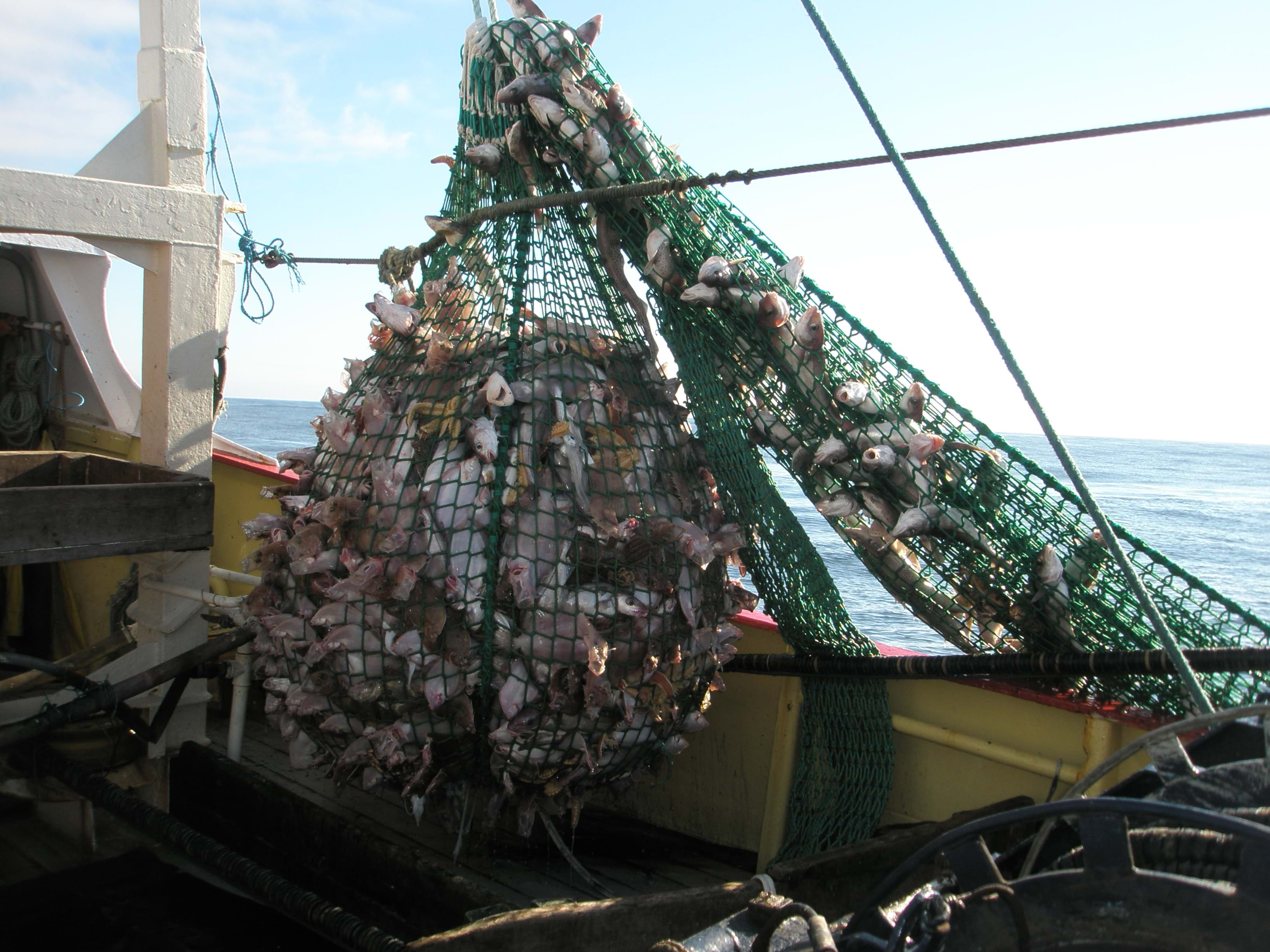4 Panel Cod-end
Summary
By constructing a cod-end using four panels it allows the cod-end to remain more open, taking up a 'rounded square' cross sectional shape compared the standard two panel cod-end that tends to take up a 'flattened oval' shape. This more open shape improves the flow of water through the trawl and into the cod-end giving the fish more space to swim in, helping to maintain the quality of the catch and allow the smaller fish more time recover to escape through the meshes. This style of cod-end is often made using square mesh or at least include sections of square mesh to improve selectivity or knotless netting that helps maintain the quality of the fish by minimising the possibility of abrasion and crush damage.

Size selectivity
- Improved size selectivity in a four-panel cod-end is usually better than that of a two-panel cod-end using the same diamond mesh size. The four-panel cod-end allows more smaller fish to escape through the meshes.
- Larger mesh. The selectivity of any cod-end depends on the mesh size, larger mesh will release slightly larger and more of the unwanted small fish to escape, this is also true of a four-panel cod-end.
- More open shape. One of the big advantages of a four-panel cod-end is that it takes up a more open shape in the water, more a rounded square shape in cross section rather than the flattened oval cross section of a two-panel cod-end.
- Fish recovery. This gives the caught fish more space to swim in helping them to recover from the stress of getting herded into the trawl and passing down its length helping to retain them in good condition. This recovery period is particularly beneficial for the smaller fish as it not only gives them more time recover but also time to escape through the meshes.
- Survivability. Because the fish have time to recover before trying to escape from the cod-end, they will be in better condition to survive after escaping through the meshes.
- Consistent Selectivity. The selectivity of a four-panel cod-end is more consistent than a two panel one as it keeps its shape better as the catch builds up, not forming as big a ‘bulb’ at the back end of the cod-end that creates differences in the openings of meshes in the cod-end.
- Improved strength. Because there are four selvedges in the four-panel cod-end the longitudinal strength of the cod-end is increased.
- Square mesh panels. It is easier to fit and operate square mesh panels as they can be fitted the full width of the top panel of the cod-end or extension.
- Extension. The above advantages of a four-panel cod-end are increased if the extension is also made in four panels.
Other information
When a four-panel cod-end is being towed through the water, it takes up a much more open cross sectional shape within the extension and cod-end, with a smooth, regular water flow. The captured fish are able to swim comfortably throughout the length of the cod-end and extension, usually not getting forced into the back of the cod-end until the gear is hauled. This helps to maintain the catch in prime condition and allows the small fish time to recovery and find possible escape route through the meshes. This should also help to improve the survivability of the smaller fish that do escape from the cod-end.
In a two-panel cod-end, where the internal opening is more restricted, there is not the space in the extension for the fish to swim freely and many will get forced into the back of the cod-end early in the tow. The fish gathering in the cod-end can result in irregular water flow in and around the cod end leading to the possibility of excessive and irregular movement of the cod-end causing the catch to get tumbled about and possible loss of quality due to abrasion with other species of fish and shell fish.
The bigger fish that cannot escape will usually be swimming within a four-panel cod-end for the duration of the tow preventing them getting any abrasion or bruising within the cod-end and helping to maintain the catch in prime condition.
The four-panel cod-end and extension makes it a relatively simple to include other selective devices. It is a simple job to fit a square mesh panel into any one of the panels without affecting the overall shape of the gear. Or to make the whole cod end or extension of square mesh. The inclusion of a rigid grid, or a net grid is made easy because you are dealing with a cross sectional shape that is roughly a square of a fairly constant dimensions. The use of square mesh for construction of the cod-end is easy when using four panels with the four selevedges helping to maintain the strength and shape of the cod end and extension. The use of knotless netting will improve fish quality considerably and should help to achieve better market prices.


Documents
Selection type
-
- Post-selection